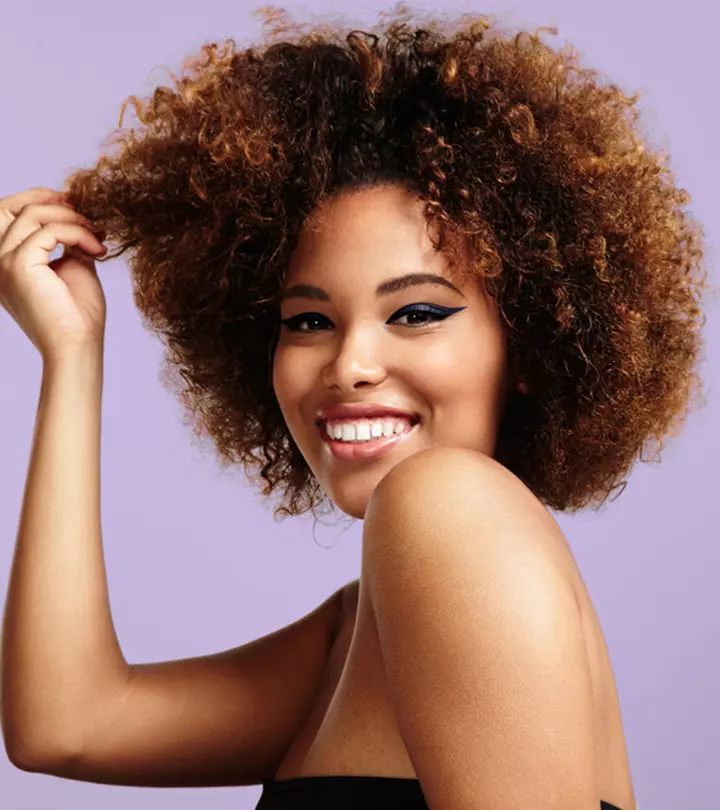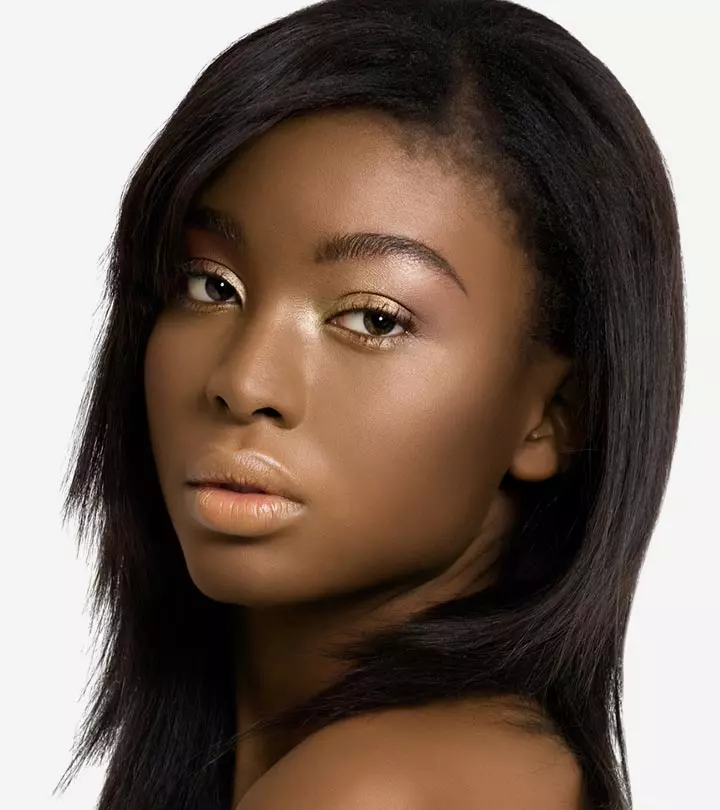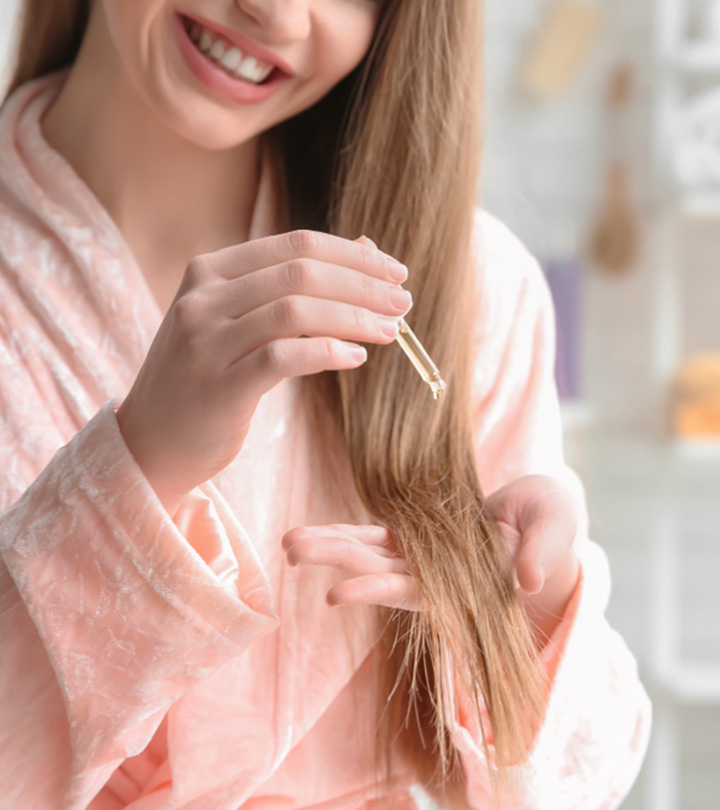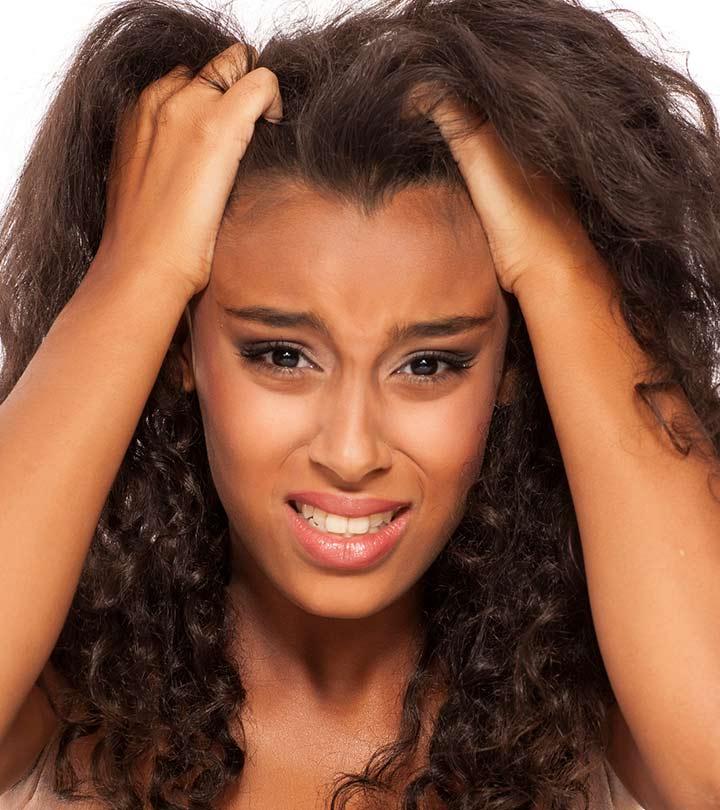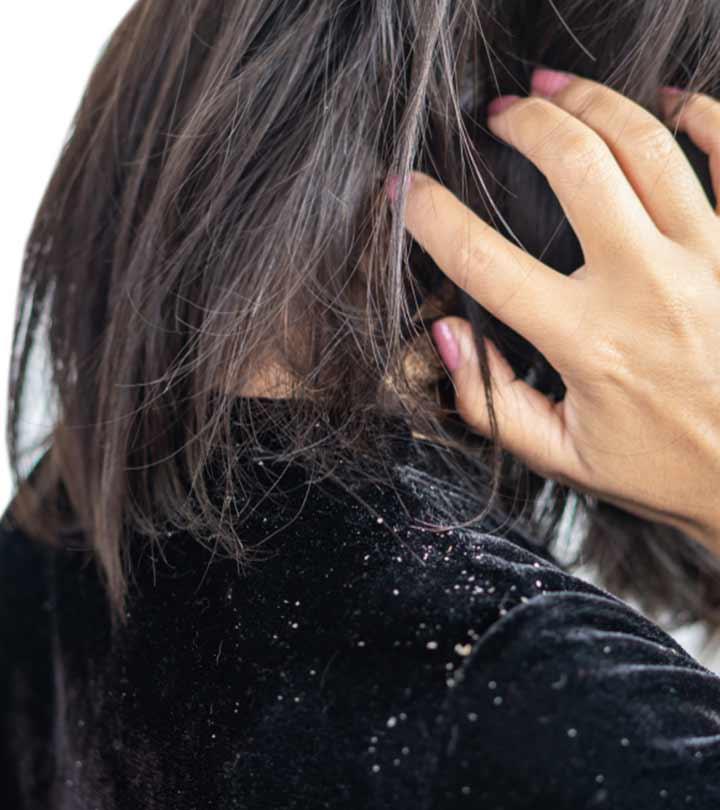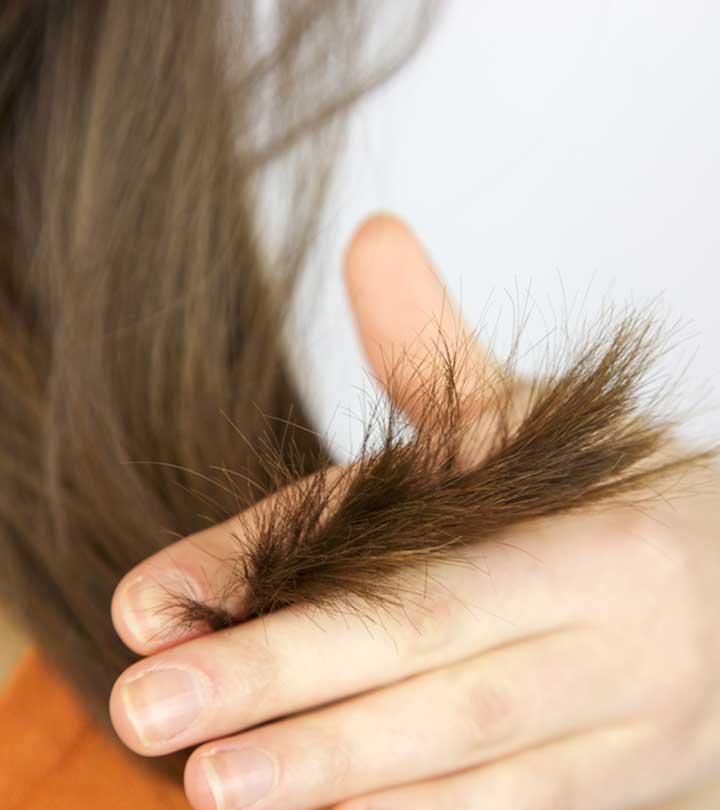Why Steaming Is So Good For Your Hair
A unique and largely underappreciated method of achieving thicker and smoother hair.
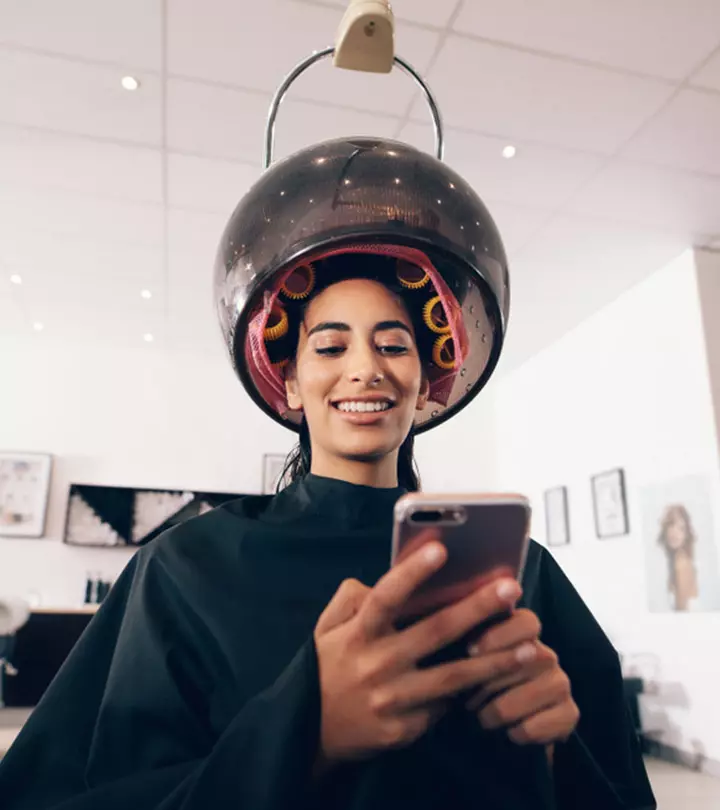
Image: Shutterstock
Steaming is so good for your hair, and a steam bath can make it look brighter, healthier, and stronger. A steaming session can revitalize and moisturize the hair cuticles and follicles. In addition, steaming can manage damaged, dry, and dull hair and boost hair growth and beauty. Discover everything you need to know about steaming your hair, including how to steam your hair properly below. Scroll down.
In This Article
What Is Hair Steaming?
Hair steaming is simply applying steam to your hair. The moist heat of the steam opens up the hair follicles and cuticles and penetrates them. This smoothens and softens the hair shaft. People with dry and damaged hair, especially those with curly and kinky hair, can benefit the most with hair steaming. Let us take a look at the benefits of hair steaming therapy in the next section.
Benefits Of Hair Streaming
- Helps boost hair growth. Steam offers moisture to the hair roots. This helps improve blood circulation to the scalp. The hair gets the required nourishment for better growth.
- Helps reduce hair breakage. Damaged or dry hair is prone to breakage. Steaming hair helps moisture to penetrate the hair cuticles and strengthen the hair strands.
- Softens hair. Steaming creates a humid environment and opens up the hair cuticles. The moisture penetrating the hair cuticles makes dry, dull, or damaged hair much softer and smoother.
- Makes hair shiny. Steaming hair increases the production of natural oils and improves moisture retention. As a result, the hair looks shiny and healthy.
- Keeps curly hair healthy. Curly hair is brittle and may need some extra TLC for added strength and health. Steaming curly and kinky hair retains its moisture and allows other hair care products to enter the hair cuticles easily. This boosts its health.
Lungi, a South African blogger, shared that she used a cloth steamer to steam her hair after applying conditioner. Regarding results, she states, “Seriously my new growth had a life of its own – that’s the only way I can describe it: it felt full, fluffy and the coils were popping! My hand in hair syndrome was at an all time high…. I am going to add steaming to most of my deep conditioning sessions. I am so glad that I tried this out. I definitely saw more benefit to my new growth than the chemically processed hair (i).”
It stands clear that steaming is among the best ways to take care of your hair. But should everyone steam their hair? Find out next.
Who Should Steam Their Hair?
Steaming is meant for all hair types. But it is especially important for people with dry, damaged, dull, low-porosity, curly, or brittle hair. Steaming will help keep the hair moisturized, soft, smooth, defined, and healthy. People with reduced hair growth can also steam their hair for faster hair growth.
However, consult a hairstylist or a dermatologist before steaming your hair if you have color-treated hair or a sensitive scalp, or have undergone a hair treatment recently, or the scalp is itchy or there are recurrent tiny boils on the scalp.
The following section tells you how you can steam your hair.
How To Steam Your Hair?
You can steam your hair at a professional salon or home.
According to a 2020 OnePoll survey conducted on 2,000 Americans, 47% of the participants prefer engaging in at-home spa rituals as a form of self-care, 41% opt to visit a spa for treatments, and 34% enjoy conducting hair treatments at home.
Hair steaming serves as both a beneficial hair treatment and an effective self-care practice that can positively impact one’s mood. The survey also revealed that 71% of respondents found happiness through these self-care practices, and 67% reported an increase in productivity. Here are some of the ways you can steam your hair and achieve similar benefits.
- At A Salon: Salons use a hair steaming machine that offers even steam throughout the scalp and hair. The salon professional will tie your hair into a bun after a good 20-30 minutes of oil massage. The hair steamer is then lowered to your forehead. You will be given steam-protecting goggles to protect your eyes. This treatment will last for about 15-20 minutes, depending on your hair type, length, and density.
- At Home: You can steam your hair at home after massaging your hair with coconut oil. Use a face steamer. These are less expensive than professional hair steamers. Face steamers can also be used for treating sinusitisi A common condition caused due to swelling of the lining of nasal passages, leading to nasal congestion and runny nose. /cold.
Section your hair and allow the steam to reach your scalp and hair. Steam each section for about 10 minutes. Those with kinky or coily hair can apply a hair moisturizer at this point. The moisturizer penetrates the hair cuticles better. Wrap a scarf over your hair and allow it to cool before washing it.
 Quick Tip
Quick TipCheck out the next section for the best ingredients that you can use for hair steaming.
Ingredients For Hair Steaming
To create a nourishing and effective hair-steaming treatment, add ant of the ingredients listed below:
- Herbs: Choose herbs like rosemary or lavender (or their essential oils) for their soothing, aromatic, and hair-growth properties (1).
- Aloe Vera Gel: Its hydrating properties reduce hair dryness and tame frizz and flyaways (2).
- Honey: It is a natural humectant that can lock moisture in the hair and reduce dandruff (3).
- Banana: It is rich in potassium and natural oils that may help improve hair elasticity and minimize breakage, promoting hair growth (4).
- Lemon Juice: It can help clarify the scalp and may promote healthy hair growth (5).
- Tea Tree Oil: It is known for its antifungal properties that can help alleviate scalp irritation and dandruff (6).
- Avocado: Its high content of vitamins and minerals like potassium and magnesium can provide deep nourishment and hydration to the hair by sealing the hair cuticle (7).
Steaming your hair is simple. But how often should you do it?
How Often Should You Steam Your Hair?
Steam your hair every Sunday or twice a month, depending on your hair type, as a part of your hair care regimen. If you have curly and kinky or low-porosity hairi Densely-packed cuticles in the hair shaft that can curb the proper absorption of moisture and cause brittle hair. , you may steam once every week. Steaming twice a month can help treat dry and damaged hair. Otherwise, steaming once a month is enough for maintaining healthy hair. Remember not to over steam your hair, as it can soften your hair roots and cause hair fall.
Before we come to a close, here is a list of dos and don’ts to keep in mind while you steam your hair.
Dos And Don’ts Of Hair Steaming
- Steam for 15-20 minutes. Massage your hair with oil before and after steaming.
- Ensure the steam reaches the hair roots.
- Use a moisturizing cream to hydrate your hair.
- Cover your hair with a scarf or a towel after steaming.
- Let your hair cool down before washing.
- Do not over steam.
 Quick Tip
Quick TipInfographic: 5 Benefits Of Steaming Your Hair
If you have been putting off that trip to the salon, you don’t need to any longer. Steaming your hair rejuvenates your dull locks, promotes hair growth, repairs damaged hair, and increases shine. We have rounded up 5 benefits of steaming your hair in the infographic below. Scroll down to know more!

Illustration: StyleCraze Design Team
Steaming your hair has a lot of hair wellness benefits. It softens, detangles, strengthens, and softens the hair by providing proper hydration. However, you should know how to do it correctly to achieve the best outcomes. Depending on the type and length of your hair, you can adjust the frequency of steaming. You can either go to a salon or steam your hair at home. However, consult a dermatologisti A medical doctor who specializes in skin, nail, and hair-related conditions and can effectively diagnose and treat them. if you have a sensitive scalp or have just had a scalp or hair treatment. Color-treated hair needs to see a hairstylist as well.
Frequently Asked Questions
Does steam make hair frizzy?
No, steaming does not make hair frizzy. It helps add moisture to the hair and keep it smooth.
Can I steam my hair with aloe vera?
Yes, you can apply aloe vera to the hair before steaming. It will help add extra moisture and soothe your scalp. Rinse it off later.
Is steaming good for dandruff?
Steaming helps solve dry scalp issues. Therefore, it may also be good for treating dandruff and can be added to your hair care routine.
Can I steam my hair with rice water?
You can use rice water as a conditioner after steaming your hair. Rice water is believed to promote hair growth, improve its elasticity, and offer conditioning effects. However, there are not enough studies to prove these claims.
Key Takeaways
- Hair steaming may improve blood circulation and promote hair growth.
- Steaming can promote hair health by keeping the strands moist and protected from breakage.
- Hair steaming is most beneficial for people with dry, damaged, dull, low-porosity, curly, or brittle hair.
Discover one of the best ways to heal hair damage by hair steaming. Strengthen your strands and watch the steam do its magic. Check out the video below.
Personal Experience: Source
StyleCraze's articles are interwoven with authentic personal narratives that provide depth and resonance to our content. Below are the sources of the personal accounts referenced in this article.
i. [How I] steam my hair using a clothes steamerhttps://healthyhairdoncare.wordpress.com/2015/07/28/how-i-steam-my-hair-using-a-clothes-steamer/
References
Articles on StyleCraze are backed by verified information from peer-reviewed and academic research papers, reputed organizations, research institutions, and medical associations to ensure accuracy and relevance. Read our editorial policy to learn more.
- Formulation and evaluation of hair growth enhancing effects of oleogels made from Rosemary and Cedar wood oils
https://www.sciencedirect.com/science/article/pii/S2468227622001302 - A Close Look at Aloe Vera Barbadensis and It’s Effect on Hair Health
https://www.researchgate.net/publication/342588964_A_Close_Look_at_Aloe_Vera_Barbadensis_and_It%27s_Effect_on_Hair_Health - Therapeutic and prophylactic effects of crude honey on chronic seborrheic dermatitis and dandruff
https://pubmed.ncbi.nlm.nih.gov/11485891/ - Evaluation of hair growth promoting activity of Musa paradisiaca unripe fruit extract
https://www.researchgate.net/publication/272895983_Evaluation_of_hair_growth_promoting_activity_of_Musa_paradisiaca_unripe_fruit_extract - Limonin a Component of Immature Citrus Fruits Activates Anagen Signaling in Dermal Papilla Cells
https://www.ncbi.nlm.nih.gov/pmc/articles/PMC9787355/ - Treatment of dandruff with 5% tea tree oil shampoo
https://pubmed.ncbi.nlm.nih.gov/12451368/ - Hair Cosmetics: An Overview
https://www.ncbi.nlm.nih.gov/pmc/articles/PMC4387693/
Read full bio of Dr. Swati Mutha
Read full bio of Ramona Sinha
Read full bio of Medha Deb










